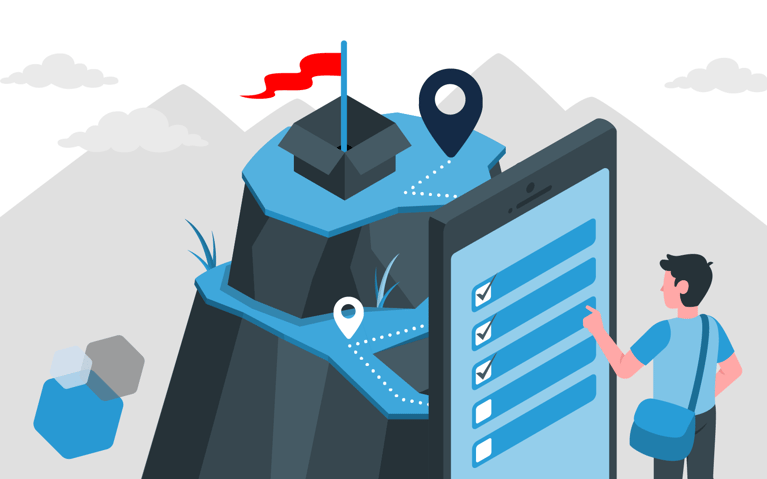The way people shop has become more complex. It’s not unusual for people to buy online and pick up in-store, shop through social channels or receive their favorite items through an ongoing subscription. Consumers also expect to receive items swiftly and easily. Because of these multiple channels and current expectations, fulfillment has become a critical part component of commerce operations and creating an optimal customer experience.
An effective fulfillment strategy is crucial for the growth and success of retail brands. As your brand scales, ensuring your fulfillment operations can keep up is essential to maintaining customer satisfaction and operational efficiency. Building a robust fulfillment strategy, including selecting the right 3PL partner, optimizing inventory management and leveraging technology for streamlined operations, is essential. This guide will help you develop a omnichannel fulfillment strategy that supports scalability and sustainable growth, helping you stay ahead in a competitive and complex market.
The importance of a fulfillment strategy
A fulfillment strategy outlines how a retail brand manages its inventory, processes orders and delivers products to customers. It encompasses everything from warehousing and logistics to customer service and returns management. A robust fulfillment strategy is critical for rapidly growing brands as it ensures that operations can scale smoothly with increasing demand.
Without a proper fulfillment strategy, brands may face challenges such as stockouts, delayed deliveries and poor customer experiences. For instance, a brand that lacks an efficient order management system might struggle to keep up with high order volumes, leading to shipping errors and dissatisfied customers. In addition, inadequate inventory management can result in overstocking or stockouts, tying up capital or losing sales opportunities. By establishing a well-thought-out fulfillment strategy, growing brands can streamline their operations, reduce costs and elevate customer satisfaction while streamlining their ability to scale and generate sustainable growth.
Assess your current fulfillment operations
Building any strategy requires knowing where you’ve been and looking at where you want to go. The first place retailers should begin is looking at their current operations, assessing their current 3PL service provider or in-house processes and identifying gaps and challenges.
Start with a thorough audit of your fulfillment operations. This involves evaluating key performance indicators (KPIs) such as order accuracy, delivery times and return rates. Tracking these metrics provides a clear picture of your current performance and highlights areas that need improvement.
For example, if your delivery times are consistently longer than industry standards, this indicates a bottleneck in your supply chain. Similarly, a high return rate could point to issues with product quality or order accuracy. Identifying these gaps allows you to focus on specific areas for enhancement. By conducting a detailed audit, you can ensure your new fulfillment strategy addresses these weaknesses and positions your brand for scalable and sustainable growth.
Implement advanced technology solutions
Your new strategy should include modern fulfillment software solutions. These advanced technologies give real-time visibility and often use machine learning and AI to provide better data and decision making. Software to consider includes:
- Order Management Systems (OMS): Streamlines order processing and inventory management. Modern OMS software often features real-time inventory tracking, multi-channel order management, automated workflows and reporting and analytics.
- Warehouse Management Systems (WMS): Optimizes warehouse operations. Integrates with ERP (Enterprise Resource Planning), TMS (Transportation Management Systems) and OMS (Order Management Systems) technology for a unified view of commerce.
Automation can significantly enhance efficiency and reduce errors in fulfillment operations by streamlining repetitive tasks and ensuring accuracy in inventory management. Automated systems, such as robotics and AI-driven software, can handle picking and packing and shipping processes more swiftly and accurately than manual methods. This not only speeds up order fulfillment but also minimizes human errors, leading to higher customer satisfaction and cost savings.
Designing a scalable fulfillment process
Having flexible processes that can adapt to growth and changes is crucial. A scalable fulfillment process ensures that your operations can handle increased order volumes during peak seasons and expand smoothly as your business grows. Standardizing fulfillment procedures is key to achieving this flexibility. Standardization creates consistency, reduces errors and enhances efficiency by ensuring that everyone follows the same protocols, regardless of changes in order volume.
To create a scalable and efficient fulfillment process:
- Start by mapping out your current workflows and identifying areas for improvement.
- Implement robust order management and warehouse management systems to streamline operations and improve inventory accuracy.
- Invest in employee training to ensure that your team is well-versed in these standardized procedures.
- Consider adopting automation technologies to handle repetitive tasks and increase processing speed.
By focusing on scalability from the outset, you can build a fulfillment strategy that supports your growth and adapts to changing market demands.
Sustainable growth through efficient fulfillment
Balancing cost and efficiency in fulfillment operations is essential for sustainable growth. Efficient fulfillment processes can reduce operational costs while ensuring timely and accurate order deliveries. Start by using fulfillment packaging best practices. This not only helps the environment but can also attract environmentally conscious customers. Consider using sustainable packaging materials and reducing waste by using right-sized packaging and reusable materials.
Improving and optimizing the post-purchase experience through reliable and timely fulfillment is another aspect of sustainable growth. Happy customers are more likely to become repeat buyers and advocates for your brand. Ensure that your fulfillment operations are designed to consistently meet customer expectations with accurate order processing, fast shipping and hassle-free returns.
Continually monitor and improve
Establish systems for continuous feedback and improvement. This is vital for maintaining an effective fulfillment strategy. Feedback loops allow you to gather insights from various stakeholders, including customers, employees and partners, to identify areas for enhancement. Regularly reviewing feedback to stay proactive in addressing issues and improving processes.
Use data and analytics to monitor performance and make informed decisions. Key performance indicators (KPIs) such as order accuracy, delivery times and return rates provide valuable insights into your fulfillment operations. By analyzing these metrics, you can identify trends, spot bottlenecks and implement changes to optimize performance. Adaptability is another critical component of continuous improvement. The retail landscape is constantly changing and evolving, and being agile allows you to pivot your strategy based on performance data and market changes. Regularly review your fulfillment processes and be prepared to adjust them to meet new challenges and opportunities. By fostering a culture of continuous improvement, you can ensure that your fulfillment strategy remains effective and competitive.
Choosing the right 3PL service for your fulfillment operations
Selecting the right third-party logistics (3PL) provider is crucial for scalability and efficiency. Key factors to consider include the provider's technology capabilities, scalability and experience in your industry. A 3PL with advanced technology can offer better visibility and control over your supply chain, while scalability ensures they can grow with your business.
Partnering with a 3PL offers several advantages, including access to a broader logistics network, expertise in fulfillment operations and the ability to focus on core business activities. An experienced 3PL can help streamline your fulfillment processes, reduce costs and improve delivery times, contributing to your overall growth strategy. By choosing the right partner, you can enhance your fulfillment operations and support your business's long-term success. Contact Cart.com today to find out more about our 3PL services and software solutions.
Subscribe to our emails for the latest industry insights!
By entering your email, you agree to receive marketing emails from Cart.com








